The United States boasts a rich and intriguing array of wildlife, marking it as one of the most diverse countries globally. The numerous national parks and protected regions in America provide habitats for 432 mammal species, over 800 bird species, in excess of 100,000 insect species, 311 reptile species, nearly 300 amphibian species, and a staggering 1154 fish species. It’s noteworthy that many of these creatures are endemic, meaning they’re exclusively found within the U.S. To illustrate, consider the Red Salamander, a semi-aquatic creature that resides in the eastern US’s rivers and lakes. Furthermore, the Florida panther, a stunningly majestic big cat, is unfortunately endangered, though there’s encouraging news as its population is slowly rebounding. If you’re eager to experience the cutest, most intimidating, bizarre, or uniquely fascinating animals this planet has to offer, explore these 25 U.S. Animals You Won’t Find Anywhere Else.

Red-cockaded woodpecker
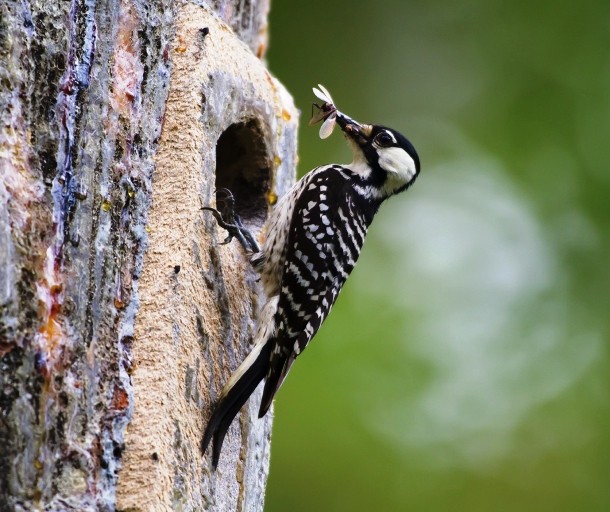 Source: en.wikipedia.org, image: commons.wikimedia.org
Source: en.wikipedia.org, image: commons.wikimedia.org Occupying mature pine forests, the red-cockaded woodpecker is a small to mid-sized territorial woodpecker. Originally found in most of the southeastern United States, the population of the species is now estimated to be about 12,500 birds, which represents only 1% of its original numbers.
Chicken turtle
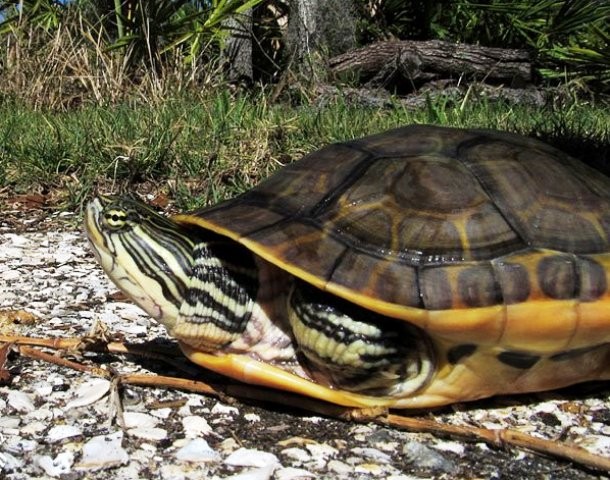 Source: en.wikipedia.org, image: commons.wikimedia.org
Source: en.wikipedia.org, image: commons.wikimedia.org Recognizable by its long, striped neck, the chicken turtle is a medium-sized semi-aquatic turtle found in shallow ponds, lakes and swamps in southeastern US. With a life expectancy of 15 – 20 years, they are social animals, spending much of their time basking on logs and rocks.
Pygmy rabbit
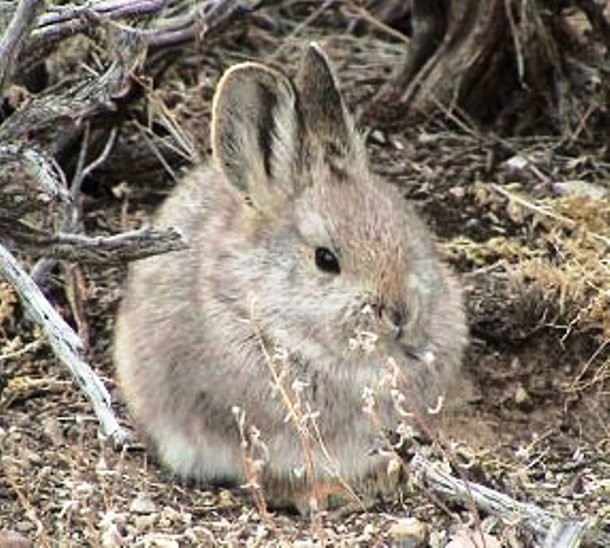 Source and image: en.wikipedia.org
Source and image: en.wikipedia.org With a body length of about 23 to 30 centimeters (9 to 12 in), the Pygmy rabbit is the world´s smallest rabbit. Native to inter-mountain areas of the western United States, the Pygmy rabbit mainly feeds on sagebrush.
Short-nose gar
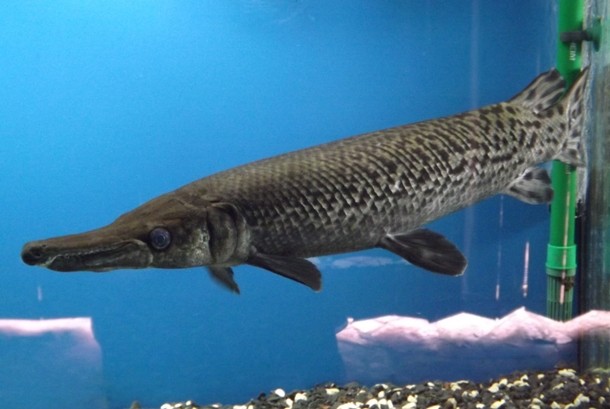 Source: en.wikipedia.org, image: commons.wikimedia.org
Source: en.wikipedia.org, image: commons.wikimedia.org Reaching a length of up to 88 centimeters (35 inches), the short-nose gar is a primitive fresh-water fish characterized by its prehistoric-like appearance. Found in calm waters of large rivers and lakes, the short-nose gar helps maintain ecosystem equilibrium by feeding on minnows that are destructive to game fish and other fish populations.
Hawaiian monk seal
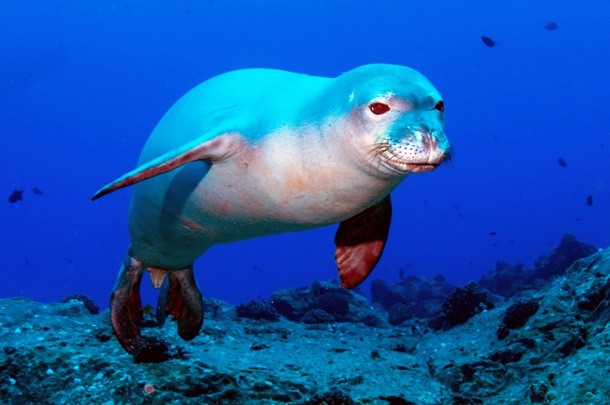 Source and image: en.wikipedia.org
Source and image: en.wikipedia.org Endemic to the Hawaiian Islands (as the name suggests), the Hawaiian monk seal is a highly endangered species of earless seals. Biologists estimate there are currently only about 1,100 specimens of these amazing marine mammals left in the wild.
Blue crayfish
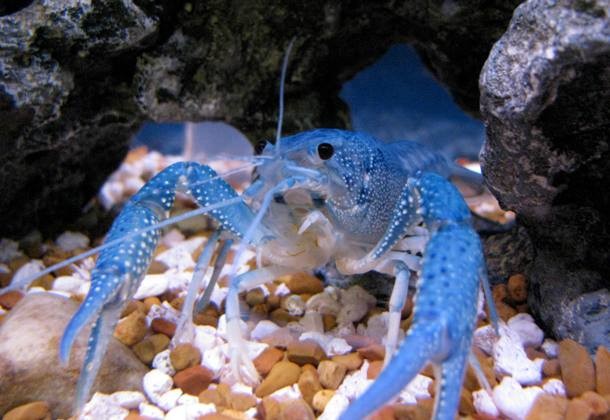 Source: en.wikipedia.org, image: commons.wikimedia.org
Source: en.wikipedia.org, image: commons.wikimedia.org Scientifically known as Procambarus Alleni, the blue crayfish is a species of freshwater crayfish endemic to Florida. Thanks to its attractive blue color, the crayfish is widely sold in the aquarium trade all over the world. Feeding on dead fish and organic waste, it helps keep rivers and lakes clean.
Gunnison grouse
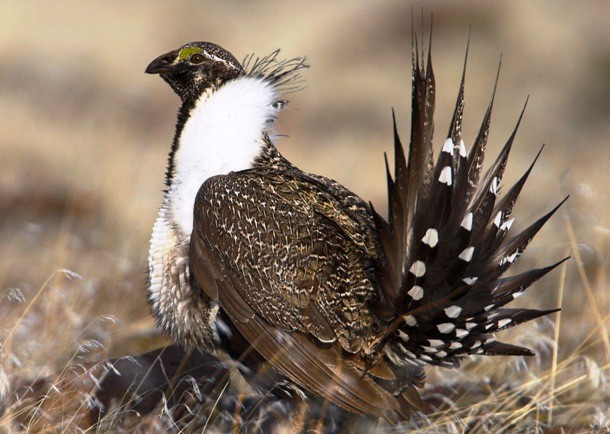 Source and image: en.wikipedia.org
Source and image: en.wikipedia.org Only found in southwestern Colorado and southeastern Utah, the Gunnison grouse is an endangered species of grouse closely related to the more famous greater sage-grouse. Similarly to its close relative, the Gunnison grouse is also notable for its elaborate courtship dance.
Island night lizard
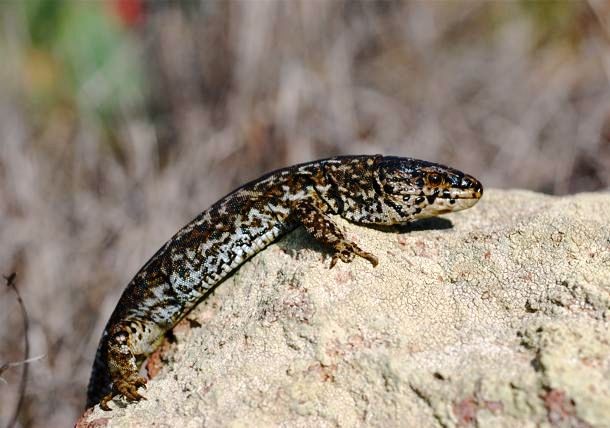 Source: en.wikipedia.org, image: commons.wikimedia.org
Source: en.wikipedia.org, image: commons.wikimedia.org Native to San Nicolas Island, Santa Barbara Island and San Clemente Island of the Channel Islands of California, the island night lizard is an 11 cm (4.3 inches) long lizard that bears live young instead of laying eggs. Considered a vulnerable species, the island night lizard can live up to 30 years.
Utah prairie dog
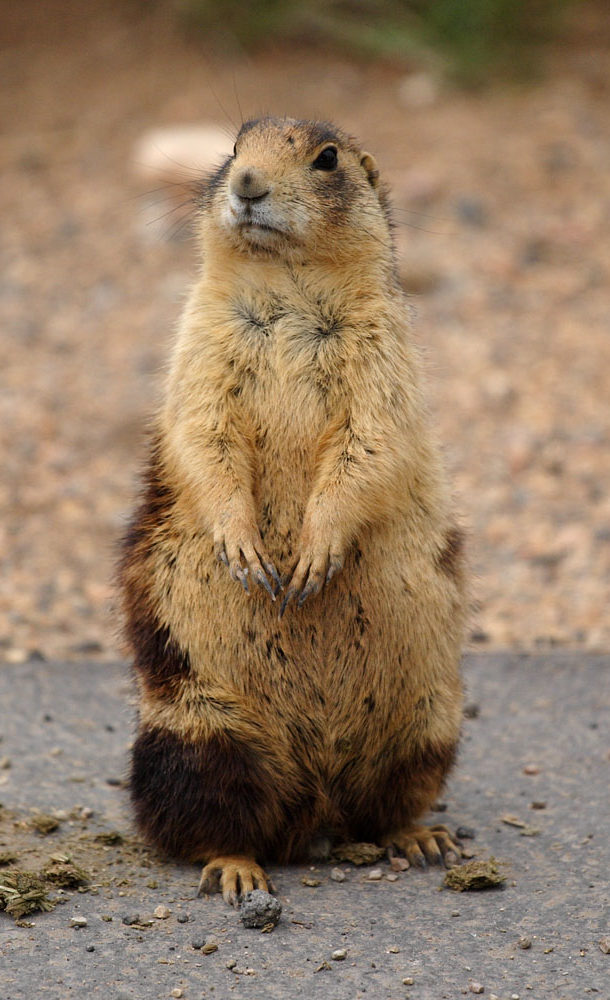 Source and image: en.wikipedia.org
Source and image: en.wikipedia.org The smallest species of prairie dog, the Utah prairie dog is a rodent only found in south central steppes of the US state of Utah. With a total population numbering just over 4,000 specimens, this animal is listed as a threatened species by the US Fish and Wildlife Service.
Hawaiian hawk
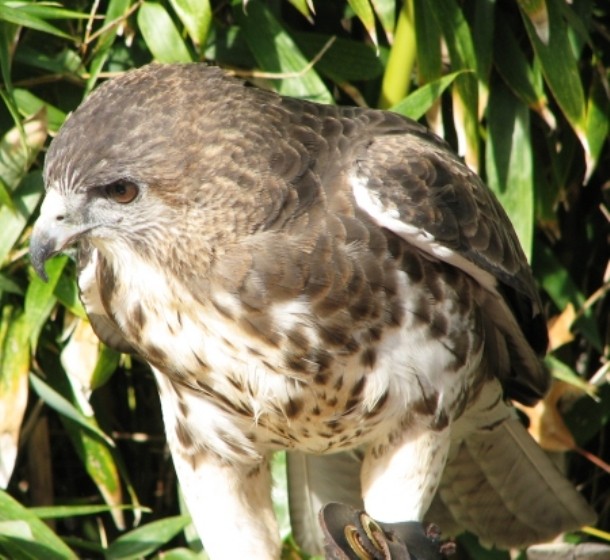 Source: en.wikipedia.org, image: commons.wikimedia.org
Source: en.wikipedia.org, image: commons.wikimedia.org Another animal endemic to the Hawaiian Islands, the Hawaiian hawk is a raptor recognizable by its large talons and bulky bodies relative to its overall length and wingspan. A royal symbol in Hawaiian legends, the hawk usually feeds on rodents, other birds, bugs, small reptiles and fish.
American paddlefish
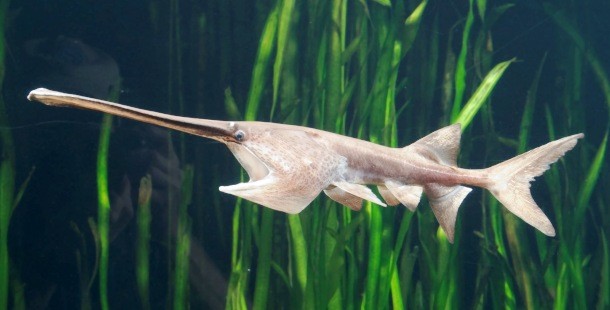 Source and image: en.wikipedia.org
Source and image: en.wikipedia.org Endemic to the Mississippi River Basin, the American paddlefish is a ray-finned fish species closely related to sturgeons. With fossils of the fish dating back over 300 million years, the American paddlefish is among the largest and longest lived freshwater fishes.
Red wolf
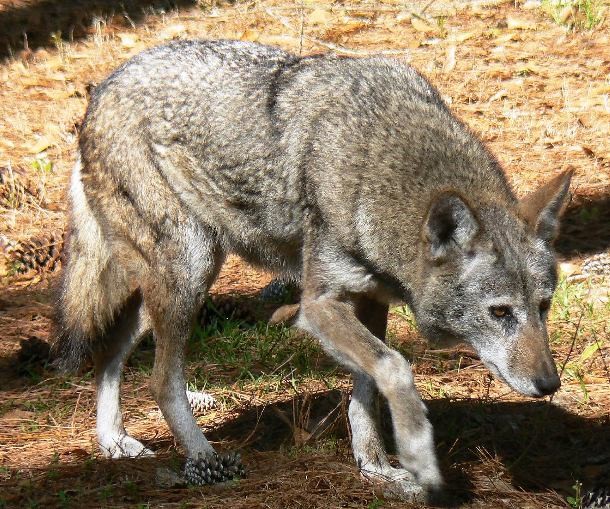 Source and image: en.wikipedia.org
Source and image: en.wikipedia.org Also known as the Florida wolf or Mississippi Valley wolf, the red wolf is a critically endangered canid native to the Southeastern United States. Morphologically, an intermediate between coyote and gray wolf, the red wolf was nearly driven to extinction in the 20th century but thanks to recent conservational efforts, its population has been slowly growing again.
American alligator
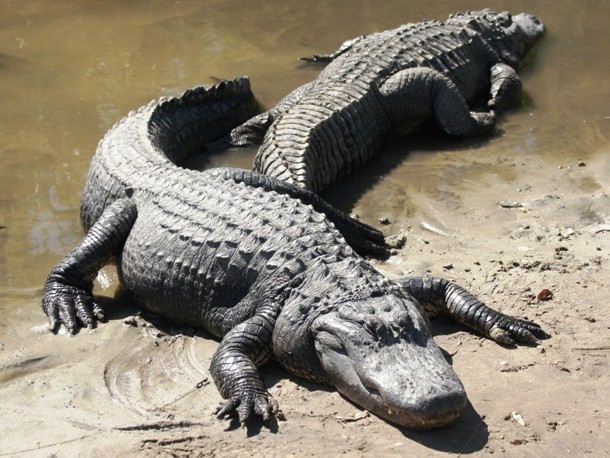 Source and image: en.wikipedia.org
Source and image: en.wikipedia.org Measuring up to 4.6 m (15 feet) and weighing up to over 450 kg (1,000 pounds), the American alligator is a large crocodilian native to southeastern US. Found in freshwater wetlands, marshes and swamps, it is an apex predator feeding on fish, birds, mammals and other reptiles.
Nene
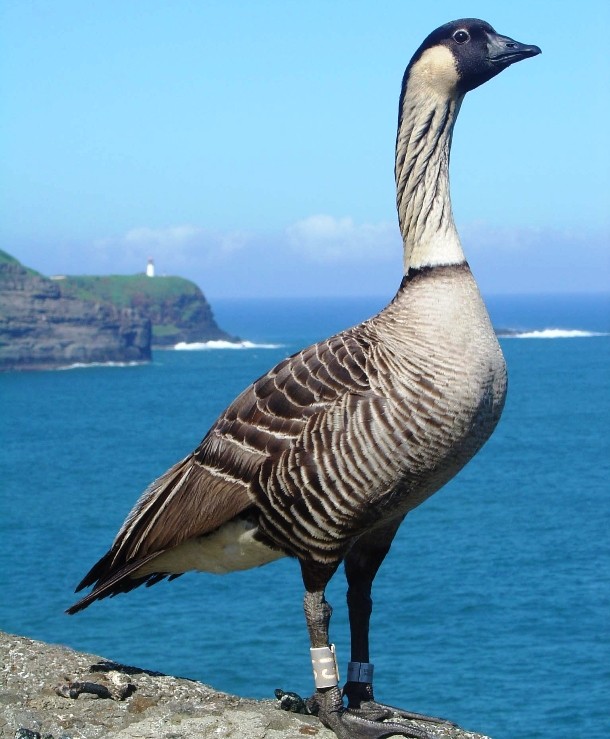 Source: en.wikipedia.org, image: commons.wikimedia.org
Source: en.wikipedia.org, image: commons.wikimedia.org Also known as Hawaiian goose, the nene is a medium-sized goose endemic to the Hawaiian Islands. In 1952, the goose’s population dwindled to 30 individuals. However, thanks to re-introduction programs their population has increased. Nevertheless, it remains the world´s rarest goose.
Red salamander
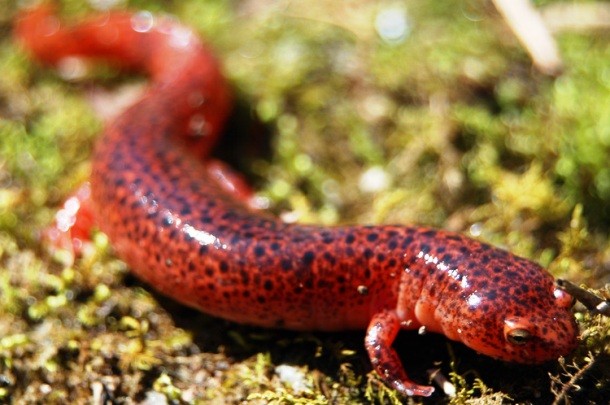 Source and image: en.wikipedia.org
Source and image: en.wikipedia.org Occupying stream and forested wetlands across eastern US, the red salamander is a semi-aquatic salamander notable for its strikingly red or orange skin with black dots. It can grow up to 20 cm (8 inches) and it eats insects, spiders and smaller salamanders.
Apache trout
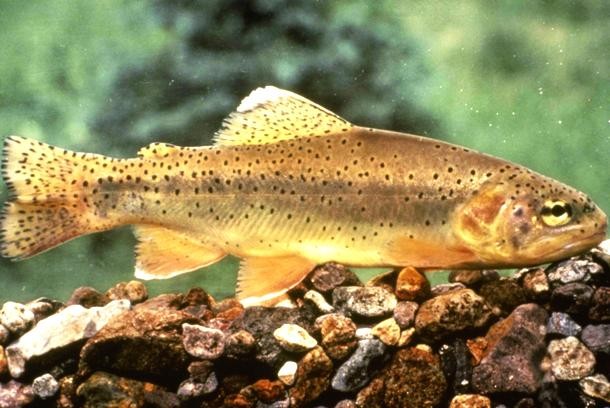 Source: en.wikipedia.org, image: commons.wikimedia.org
Source: en.wikipedia.org, image: commons.wikimedia.org The state fish of Arizona, the apache trout is a critically endangered freshwater fish in the salmon family. Reaching up to 61 cm (24 inches) in length and weighing up to 2.7 kg (6 pounds), it is native to the upper Salt River watershed (Black and White rivers) and the upper Little Colorado River watershed.
Island fox
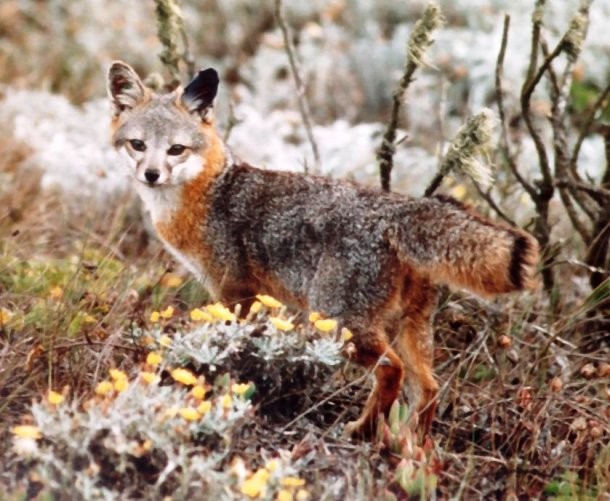 Source and image: en.wikipedia.org
Source and image: en.wikipedia.org Also known as coast fox or short-tailed fox, the island fox is a small fox native to six of the eight Channel Islands of California. There are six subspecies of the fox, each unique to the island it lives on, reflecting its evolutionary history. Weighing between 1 and 2.8 kg (2.2 and 6.2 lb), it eats fruits, insects, birds, eggs, lizards, rodents…pretty much anything it wants to eat.
Pigmy rattlesnake
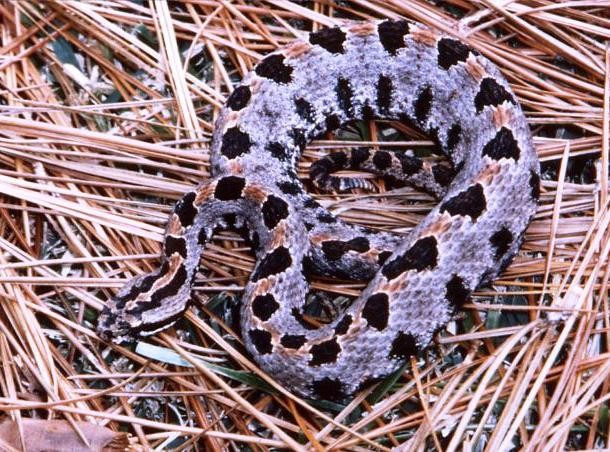 Source: en.wikipedia.org, image: commons.wikimedia.org
Source: en.wikipedia.org, image: commons.wikimedia.org Scientifically known as Sistrurus Miliarius, the Pigmy rattlesnake is a small venomous pit viper native to southeastern US.
Allen's hummingbird
 Source and image: en.wikipedia.org
Source and image: en.wikipedia.org Common only in the brushy woods, gardens, and meadows of coastal California, the Allen’s hummingbird is a small bird, with mature adults measuring only up to 9 cm (3.5 inches). Like all hummingbirds, the Allen’s hummingbird’s high rate of metabolism requires it to feed frequently, about every hour. It drinks nectar from flowers and eats small insects.
Florida panther
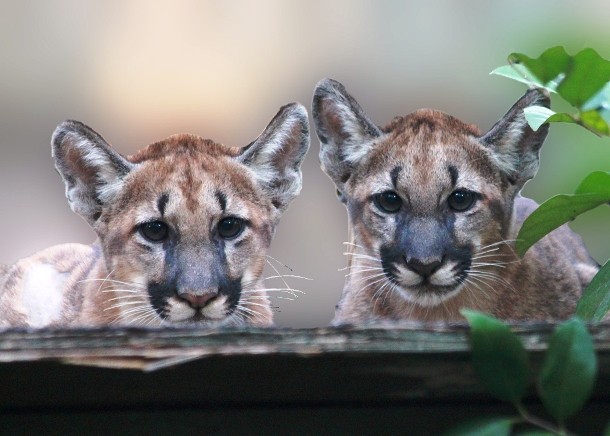 Source and image: en.wikipedia.org
Source and image: en.wikipedia.org An endangered subspecies of cougar, the Florida panther (sometimes also known as the mountain lion and by several other names) is a big cat that lives in forests and swamps of southern Florida. Almost driven to extinction in the 1970s, its population is now estimated to be about 160 specimens. In 1982, the Florida panther was chosen as the Florida state animal.
Potter´s angelfish
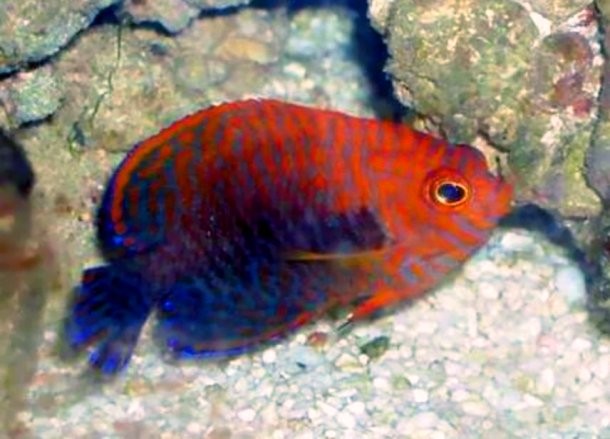 Source: en.wikipedia.org, image: commons.wikimedia.org
Source: en.wikipedia.org, image: commons.wikimedia.org Named in honor of Frederick A. Potter, the former director of the Waikiki Aquarium, the Potter´s angelfish is a small colorful fish native to the Hawaiian Islands. These up to 10 cm (4 inches) long fish inhabit rocky ledges, where they feed on algae and detritus.
Alaska marmot
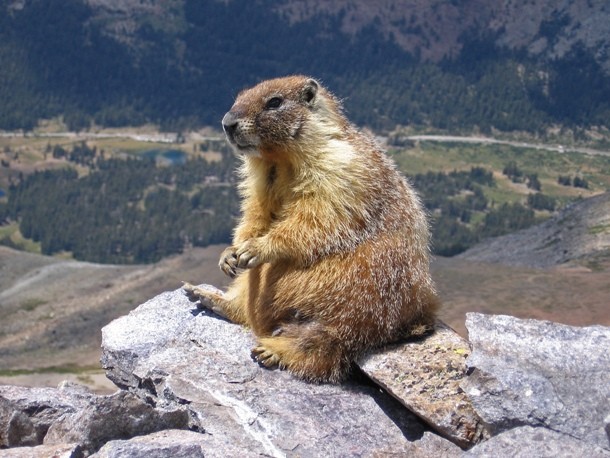 Source and image: en.wikipedia.org
Source and image: en.wikipedia.org Also known as the Browers, the Alaska marmot is a medium-sized rodent living in the scree slopes of the Brooks Range, Alaska. It can be recognized by its short neck, small ears, short powerful legs and feet, densely furred bushy tail, and a thick body covered in coarse hair. Alaska marmots are very social animals, living in colonies of up to 50 members.
Giant garter snake
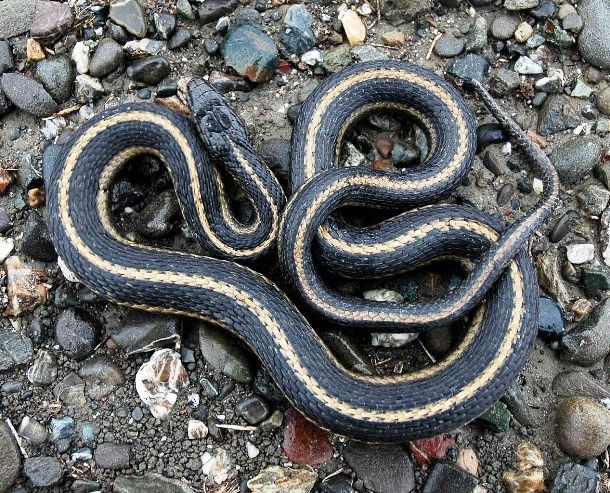 Source: en.wikipedia.org, image: commons.wikimedia.org
Source: en.wikipedia.org, image: commons.wikimedia.org The largest species of garter snake, the giant garter snake is a harmless largely aquatic snake endemic to the Central Valley wetlands of California. It is active when water temperatures are at 68° F (20°C) or more, and is dormant underground when its aquatic habitat is below this temperature.
Yellow-billed magpie
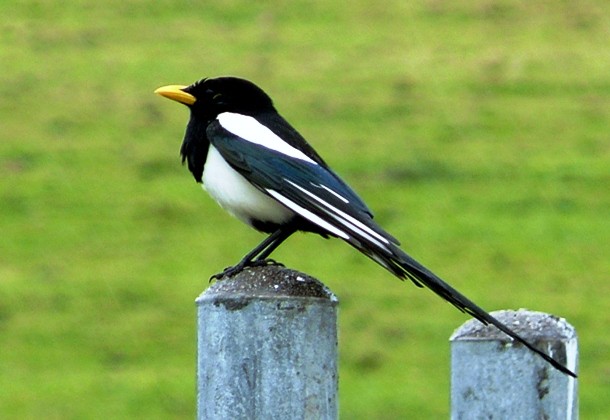 Source: en.wikipedia.org, image: commons.wikimedia.org
Source: en.wikipedia.org, image: commons.wikimedia.org Another animal endemic to the Central Valley of California, the yellow-billed magpie is a large bird in the crow family. It is closely related to the black-billed magpie that can be found in much of North America.
Hopi chipmunk
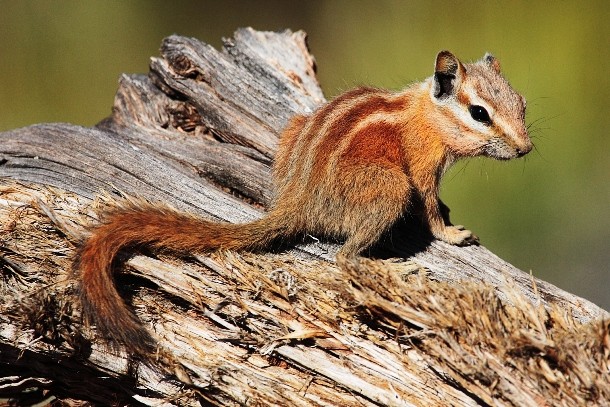 Source and image: en.wikipedia.org
Source and image: en.wikipedia.org Found in Colorado, Utah, Arizona and some southwestern United States, the Hopi chipmunk is a small abundant chipmunk that feeds on nuts, seeds and fruits. Unlike some other chipmunk species, the Hopi chipmunks are naturally timid, and even individuals born in captivity never become tame.



























